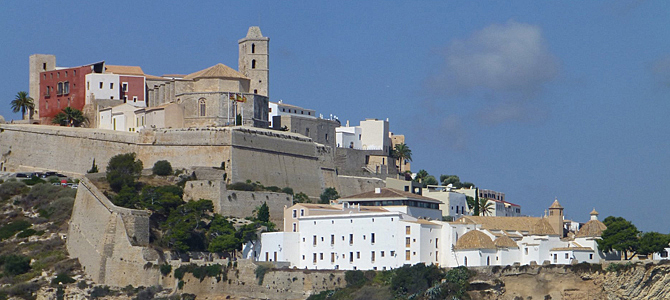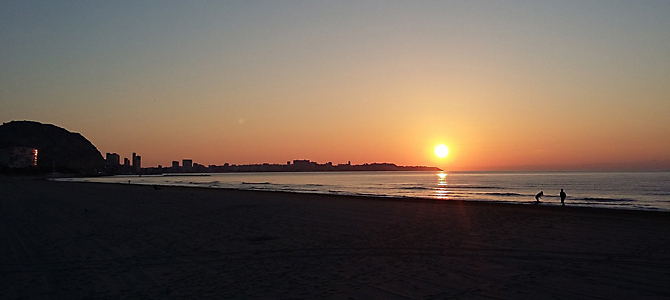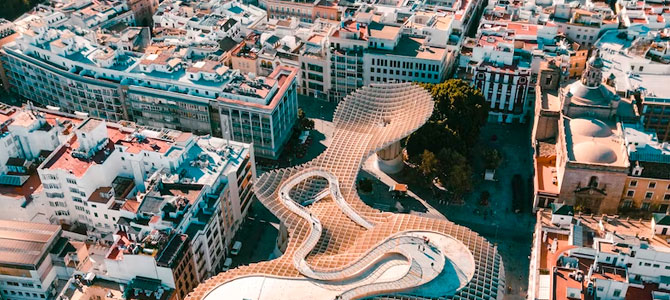The Fallas of Valencia, recognised as a Festival of International Tourist Interest, is one of the most popular celebrations in Spain during the month of March, attracting thousands of visitors to the city during these dates.
This celebration transforms Valencia into a spectacle of colours, emotions and centuries-old traditions. This unique festivity is not only visually stunning, but becomes a sensory experience that immerses you in the true soul of the city. From ninots and mascletás to the unmistakable sound of “Paquito el Chocolatero”, the Fallas are an explosion of culture, gunpowder and fun.
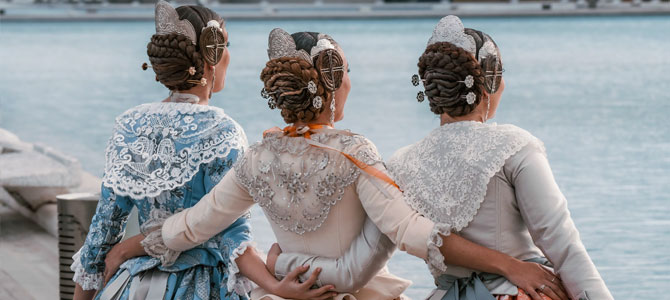
When are the Fallas in Valencia?
Las Fallas are celebrated every year between the 14th and 19th of March to honour Saint Joseph. The hustle and bustle begins much earlier, with the firing of a mascletá every day from the 1st of March in Valencia’s Town Hall square. This unique event blends culture, history, fiesta, gastronomy and popular music, making it an unrivalled prelude to spring in Valencia.
On weekends, there are also nightly mascletás at 00:00 hours in the same place.
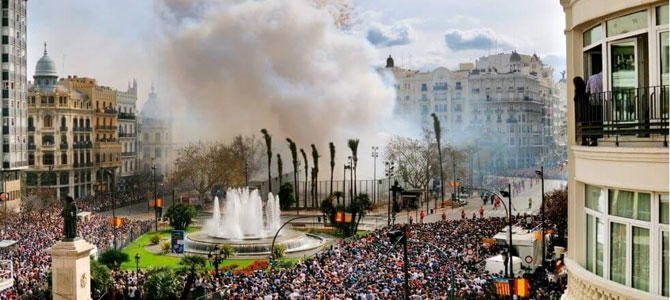
The week culminates with highlights such as the closing of the Ninot Exhibition on 14 March, the plantà of all the Fallas on 16 March, and the Nit del Foc, with firework displays from 16 to 18 March. The Offering of Flowers to the Virgen de los Desamparados takes place on 17 and 18 March, where more than 300 Fallas commissions and the Falleras Mayores of Valencia pay homage to the virgin.
The Fallas end on 19 March with the solemn mass in honour of Saint Joseph, the fire parade at 6 p.m. through the centre of Valencia, and finally, the cremà of the Fallas. The Cremà of the Children’s Municipal Falla is at 9 pm, and the cremà of the big Falla in the Town Hall square is at 11 pm.
What are the Fallas of Valencia?
To appreciate the dimension of Las Fallas, it is essential to go back in time and immerse oneself in its origins. The festivity had its humble beginnings at the hands of the carpenters’ guild, who, on the eve of the day of their patron saint, Saint Joseph, carried out a purifying ritual by burning shavings and old junk in a bonfire, thus carrying out a symbolic cleaning of the workshops before the arrival of spring.
What was initially an act of veneration for the carpentry craftsmen has undergone an evolution over the centuries. This transformation has ended up incorporating the imposing “ninots”, ephemeral monuments that have become the heart of Las Fallas.
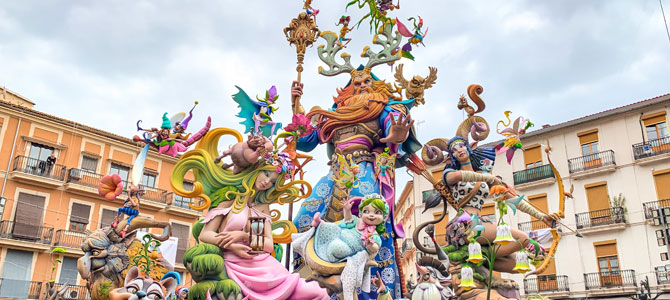
Exploration of the Monumental
Every street in Valencia becomes a stage where the majestic ninots tell little stories. From witty satires to representations of everyday life, these ephemeral monuments are true masterpieces that reflect the artistic skill of the falleros.
However, there are always some ninots that receive a reprieve and become part of the prestigious Museo Fallero.
During the early hours of the 19th, many people associate it with the previous day, Saturday night, the 18th, the Nit del Foc, a dazzling fireworks spectacular that heralds the beginning of the festive outcome.
The pinnacle of the celebration comes with the Cremà de las Fallas, a unique moment when all the creations burn, marking the culmination of the festival on the night of 19 March. More than a visual event, the cremà is an emotional experience that symbolises renewal and acceptance of the transience of life.
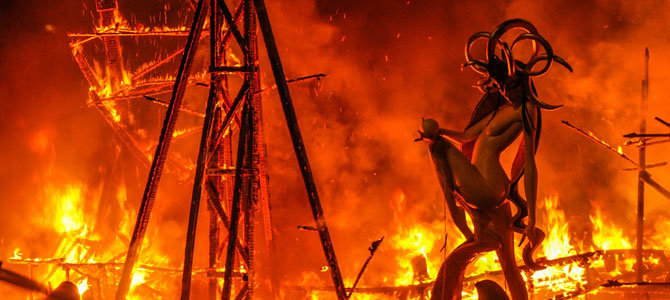
The fallas are also great fun for the little ones; you can visit children’s fallas, with a maximum of three metres in any of their dimensions. Generally, they are linked to children’s themes, and their cremà takes place before the official one, at approximately 22:00 hours.
Festive atmosphere in the streets of Valencia
Music plays a fundamental role in Las Fallas, being an element intrinsically linked to the celebration. The Fallas commissions hire more than 300 music bands to accompany the different events of the Fallas. During the festivities, traditional tunes such as “Paquito el chocolatero” and “Amparito Roca” can be heard alongside more modern songs. In addition to the bands, there are traditional Valencian music groups with dulzainas and tamboriles. During the evenings, music is still relevant with verbenas, orchestras and “discomóviles” in the neighbourhoods, inviting everyone to enjoy themselves until dawn.
Fallas Gastronomy: Delicacies that Complement the Celebration
During Fallas in Valencia, food becomes an essential part of the celebration. From paellas and pumpkin fritters to hot chocolate and churros. In addition, drinks such as Alcoyano and horchata de chufa (tiger nut milk) are popular. The tradition of the “cena de sobaquillo”, consisting of a “blanc i negre” sandwich with white sausage and blood sausage as ingredients, either in the fallera commissions or enjoyed anywhere, adds a special touch to the festive experience.
Recommendations for exploring Valencia and taking part in the festivities
To fully enjoy the experience, here are some recommendations:
- Organise in advance: Due to the high influx of tourists, plan your holiday in advance and look for holiday rentals near Valencia, not in the city centre.
- Dress comfortably and wear practical footwear: Given the mobility on foot during the Fallas, opt for comfortable clothes and footwear to move around easily.
- Avoid crowds: At hectic times, avoid the busiest streets and don’t worry about watching the “Mascletà” in the front row; it can be enjoyed from other parts of the Plaza del Ayuntamiento.
- Be patient: Las Fallas is a unique experience, but it is essential to be patient as you move around the city, explore the monuments and enjoy the hospitality in bars and restaurants. Remember you are on holiday, so relax and enjoy.

